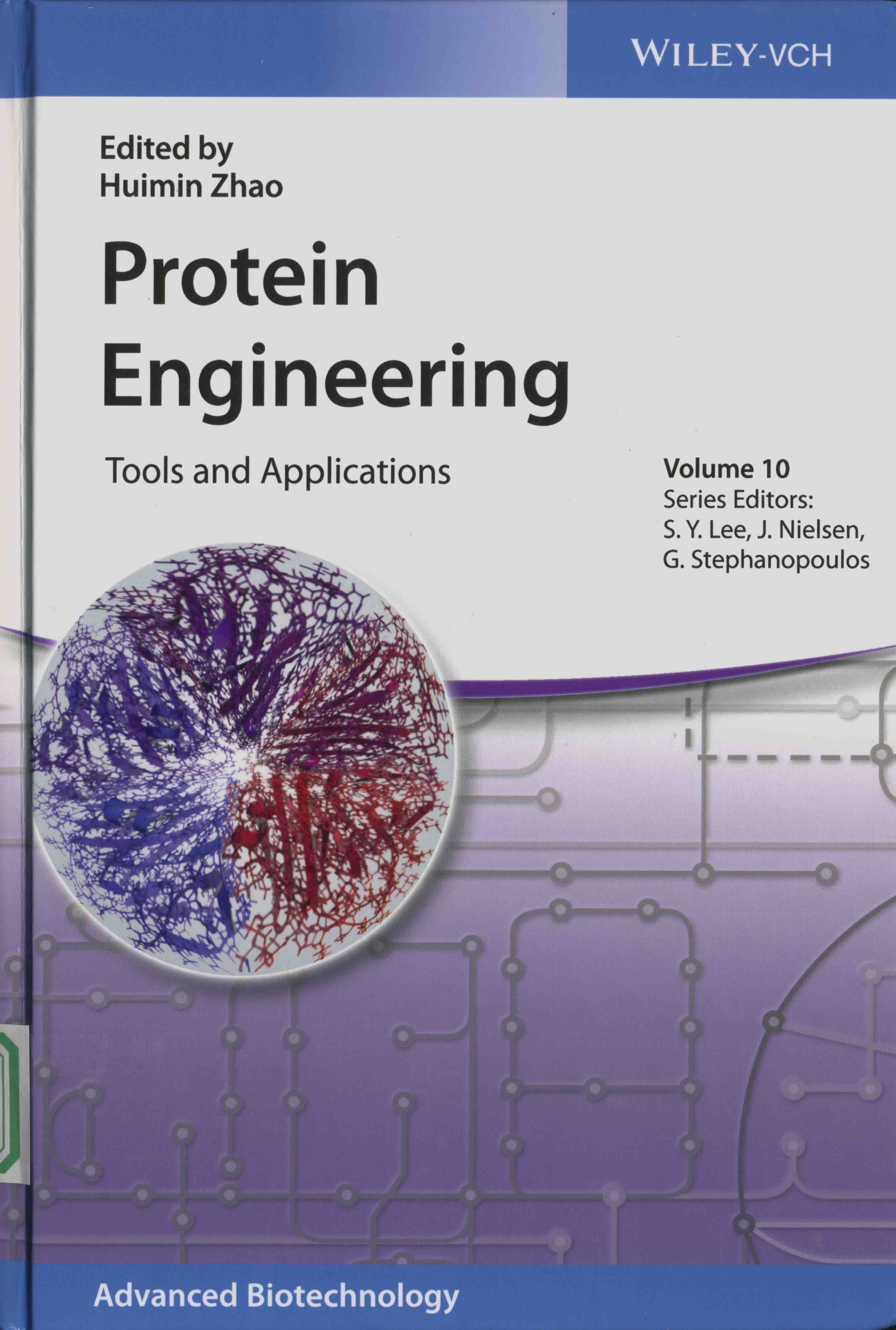 |
Protein engineering : tools and applications / edited by Huimin Zhao. -- Weinheim, Germany : Wiley-VCH, 2021. --- (82.95/P967) |
Contents
Part I Directed Evolution 1
1 Continuous Evolution of Proteins In Vivo 3
1.1 Introduction 3
1.2 Challenges in Achieving In Vivo Continuous Evolution 5
1.3 Phage-Assisted Continuous Evolution (PACE) 10
1.4 Systems That Allow In Vivo Continuous Directed Evolution 13
1.5 Conclusion 22
References 22
2 In Vivo Biosensors for Directed Protein Evolution 29
2.1 Introduction 29
2.2 Nucleic Acid-Based In Vivo Biosensors for Directed Protein Evolution 32
2.3 Protein-Based In Vivo Biosensors for Directed Protein Evolution 37
2.4 Characteristics of Biosensors for In Vivo Directed Protein Evolution 44
2.5 Conclusions and Future Perspectives 45
Acknowledgments 46
References 46
3 High-Throughput Mass Spectrometry Complements Protein Engineering 57
3.1 Introduction 57
3.2 Procedures and Instrumentation for MS-Based Protein Assays 59
3.3 Technology Advances Focusing on Throughput Improvement 62
3.4 Applications of MS-Based Protein Assays: Summary 63
3.5 Conclusions and Perspectives 68
Acknowledgments 68
References 69
4 Recent Advances in Cell Surface Display Technologies for Directed Protein Evolution 81
4.1 Cell Display Methods 81
4.2 Selection Methods and Strategies 86
4.3 Modifications of Cell Surface Display Systems 89
4.4 Recent Advances to Expand Cell-Display Directed Evolution Techniques 93
4.5 Conclusion and Outlook 96
References 97
5 Iterative Saturation Mutagenesis for Semi-rational Enzyme Design 105
5.1 Introduction 105
5.2 Recent Methodology Developments in ISM-Based Directed Evolution 108
5.3 B-FIT as an ISM Method for Enhancing Protein Thermostability 120
5.4 Learning from CAST/ISM-Based Directed Evolution 121
5.5 Conclusions and Perspectives. 121
Acknowledgment 124
References 124
Part II Rational and Semi-Rational Design 133
6 Data-driven Protein Engineering 135
6.1 Introduction 135
6.2 The Data Revolution in Biology 136
6.3 Statistical Representations of Protein Sequence, Structure, and Function 138
6.4 Learning the Sequence-Function Mapping from Data 141
6.5 Applying Statistical Models to Engineer Proteins 145
6.6 Conclusions and Future Outlook 147
References 148
7 Protein Engineering by Efficient Sequence Space Exploration Through Combination of Directed Evolution and Computational Design Methodologies 153
7.1 Introduction 153
7.2 Protein Engineering Strategies 154
7.3 Conclusions and Future Perspectives 171
Acknowledgments 171
References 171
8 Engineering Artificial Metalloenzymes 177
8.1 Introduction 177
8.2 Rational Design 177
8.3 Engineering Artificial Metalloenzyme by Directed Evolution in Combination with Rational Design 188
8.4 Summary and Outlook 200
Acknowledgment 201
References 201
9 Engineered Cytochromes P450 for Biocatalysis 207
9.1 Cytochrome P450 Monooxygenases 207
9.2 Engineered Bacterial P450s for Biocatalytic Applications 210
9.3 High-throughput Methods for Screening Engineered P450s 227
9.4 Engineering of Hybrid P450 Systems 229
9.5 Engineered P450s with Improved Thermostability and Solubility 230
9.6 Conclusions 231
Acknowledgments 232
References 232
Part III Applications in Industrial Biotechnology 243
10 Protein Engineering Using Unnatural Amino Acids 245
10.1 Introduction 245
10.2 Methods for Unnatural Amino Acid Incorporation 246
10.3 Applications of Unnatural Amino Acids in Protein Engineering 247
10.4 Outlook 256
10.5 Conclusions 258
References 258
11 Application of Engineered Biocatalysts for the Synthesis of Active Pharmaceutical Ingredients (APIs) 265
11.1 Introduction 265
11.2 Conclusions 282
References 287
12 Directing Evolution of the Fungal Ligninolytic Secretome 295
12.1 The Fungal Ligninolytic Secretome 295
12.2 Functional Expression in Yeast 297
12.3 Yeast as a Tool-Box in the Generation of DNA Diversity 302
12.4 Bringing Together Evolutionary Strategies and Computational Tools 305
12.5 High-Throughput Screening (HTS) Assays for Ligninase Evolution 306
12.6 Conclusions and Outlook 309
Acknowledgments 309
References 310
13 Engineering Antibody-Based Therapeutics: Progress and Opportunities 317
13.1 Introduction 317
13.2 Antibody Formats 318
13.3 Antibody Discovery 322
13.4 Therapeutic Optimization of Antibodies 328
13.5 Manufacturability of Antibodies 336
13.6 Conclusions 339
Acknowledgments 339
References 339
14 Programming Novel Cancer Therapeutics: Design Principles for Chimeric Antigen Receptors 353
14.1 Introduction 353
14.2 Metrics to Evaluate CART Cell Function 354
14.3 Antigen-Recognition Domain 356
14.4 Extracellular Spacer 360
14.5 Transmembrane Domain 362
14.6 Signaling Domain 362
14.7 High-Throughput CAR Engineering 366
14.8 Novel Receptor Modalities 367
References 369
Part IV Applications in Medical Biotechnology 377
15 Development of Novel Cellular Imaging Toots Using Protein Engineering 379
15.1 Introduction 379
15.2 Cellular Imaging Tools Developed by Protein Engineering 380
15.3 Application in Cellular Imaging 386
15.4 Conclusion and Perspectives 393
References 394
Index 403